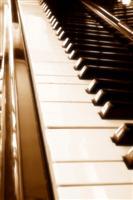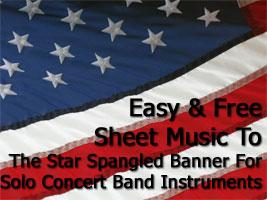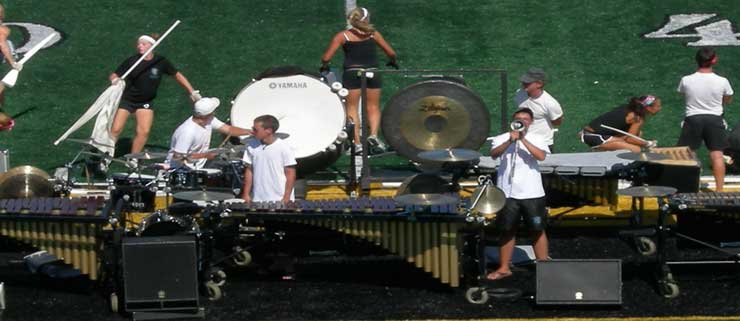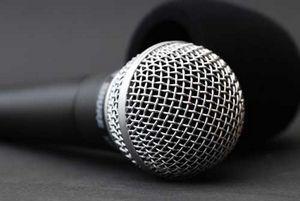 A keyboard instrument is the set of adjacent depressible keys on a musical instrument. The piano is an obvious example. Keyboards contain keys for playing the notes of the musical scale, for instance, 12 notes of the Western musical scale, repeating at the interval of an octave. Depressing a key on the keyboard causes the instrument to produce sounds. On electric and electronic keyboards, depressing a key connects a circuit, for example, in Hammond organ, digital piano or synthesizer.
A keyboard instrument is the set of adjacent depressible keys on a musical instrument. The piano is an obvious example. Keyboards contain keys for playing the notes of the musical scale, for instance, 12 notes of the Western musical scale, repeating at the interval of an octave. Depressing a key on the keyboard causes the instrument to produce sounds. On electric and electronic keyboards, depressing a key connects a circuit, for example, in Hammond organ, digital piano or synthesizer.
The keyboard musical instruments include the piano, referred to as a pianoforte in the earlier centuries especially during the 17th and 18thcenturies, and various types of electronic keyboard, harpsichord and organs. Grand, upright and electric pianos feature a single set of black and white keys, usually 88 of them and covering seven octaves. Electronic keyboards often stop at five octaves. The organs and harpsichords tend to have more than one set of keys, or manuals (the term distinguishes keys depressed by the fingers from foot-operated pedals. The harpsichord makes a sound when 'jacks' pluck strings and the pipe organ, when air is blown through a pipe by an electronic blower.
A List of Common Keyboard Instruments
Piano - is technically classed as a percussion instrument because its sound is made by hammers hitting strings when a player presses the keys. The piano developed at the beginning of the 18th century. Its basic form has changed little since the middle of the 19th century, but the 20th century saw the growth of a broader range of instrument, including mini upright pianos and electric keyboards. A facility on the piano gives access to music written in a wide range of musical styles.Â
Electronic Keyboard - is an electric musical instrument whose popularity started in the late 1960s, was at its height during the 1970s and still is popular today. It is usually the choice of children. One big attraction is that it can be played with headphones. In the late 1980s, some electric pianos have built-in speakers and enlarged like a small upright piano. Â
Harmonium - a term used to describe all pedal or hand-pumped free reed instruments, that is, those in which a reed vibrates freely without touching or being touched by anything. The harmonium has been superseded by the electronic keyboards, but the smaller, more portable Indian version, is still popular. The European harmonium is similar to an upright piano and often used in churches and drawing rooms of the Victorian era. Â
Harpsichord - is a forerunner of the piano, the harpsichord has two sets of keys, known as manuals, and its strings are plucked, rather than struck. The spinet is a small harpsichord. Electronic versions are sometimes used in performance as a substitute.
Organ - has a variety usually found in churches. Organ can be pipe, electronic, or the blown-air. They have one or more keyboards, known as manuals, and a pedal board, which makes playing a complex feat of coordination and technique. The electronic organ became popular before the electronic keyboard. Today, for its portability, the electronic keyboard is a better choice.Â
Hearing These Instruments
The piano has a range of music wider than any other instrument. It is usually heard as a solo instrument and accompaniment in classical settings, jazz improvisation, and popular works of different types. The range of sounds created by electronic keyboards is very well explored in popular, as well as modern classical music. The pipe organ is best heard in church, the harpsichord in early music ensembles, while the Indian harmonium is heard largely in Indian classical music.
Keyboard Instrument Players
Keyboard instruments require a number of complex and challenging skills. The first is manual dexterity, although it is possible to play keyboards with restricted finger movement; second is the expectation that both hands develop independence and strength; finally, is the ability to simultaneously read two lines of music written on two staves, each allocating contrasting lines and spaces to different note names. The organ magnifies all this by having several manual keyboards, plus a pedal board that requires an independent movement of each foot. At least electronic keyboards help by doing some of the hard work for the player.
Playing the piano is not as easy at it looks, but often, many good pianists make it look like it is. The answer is practice and lots of it. While it is easy to make a sound on the piano compared perhaps with some of the wind instruments, constant practice of the skills required should not be taken for granted.







 Scroll down to view the comparison chart of over a dozen different portable digital audio recorders.
Scroll down to view the comparison chart of over a dozen different portable digital audio recorders.